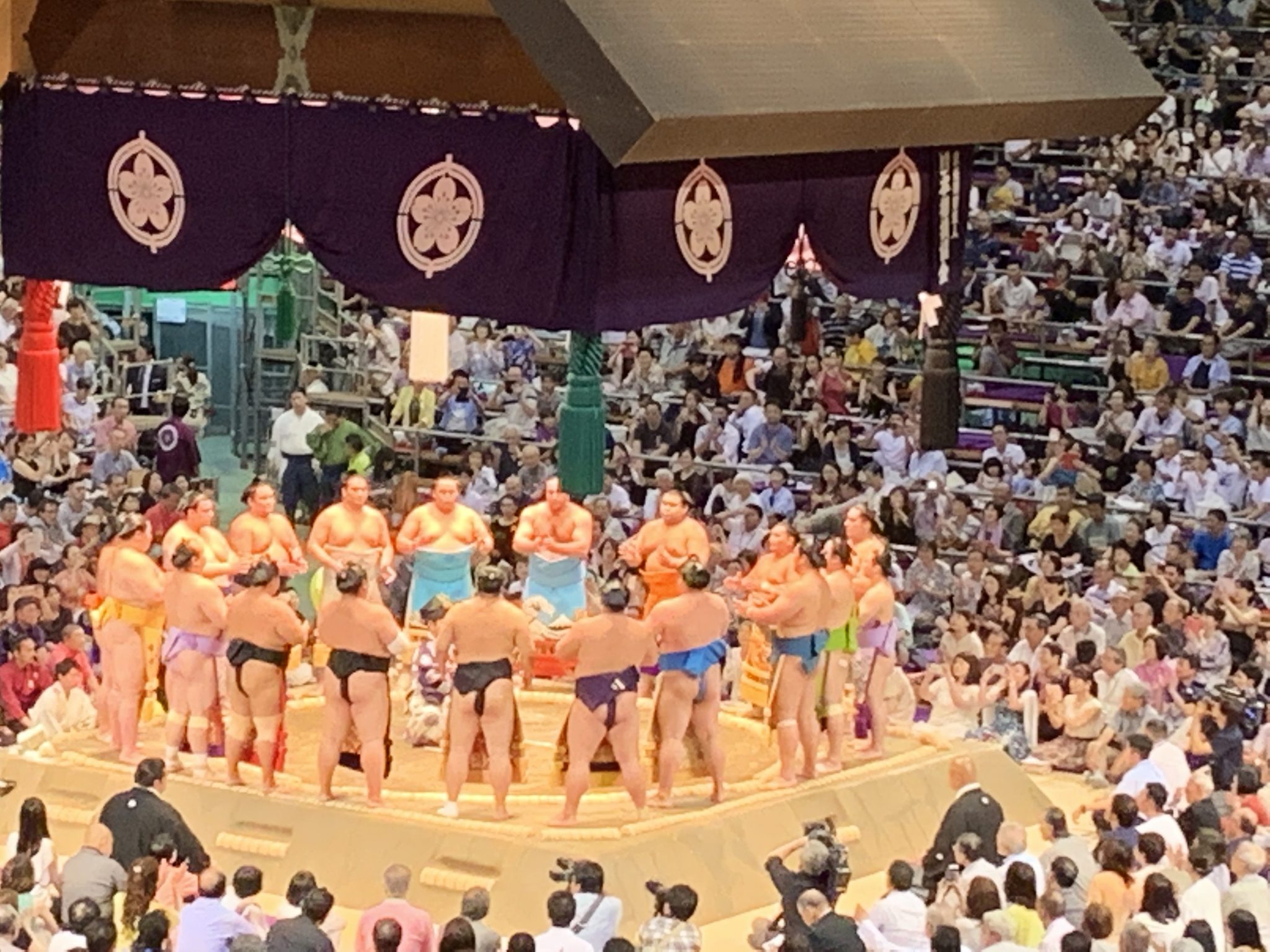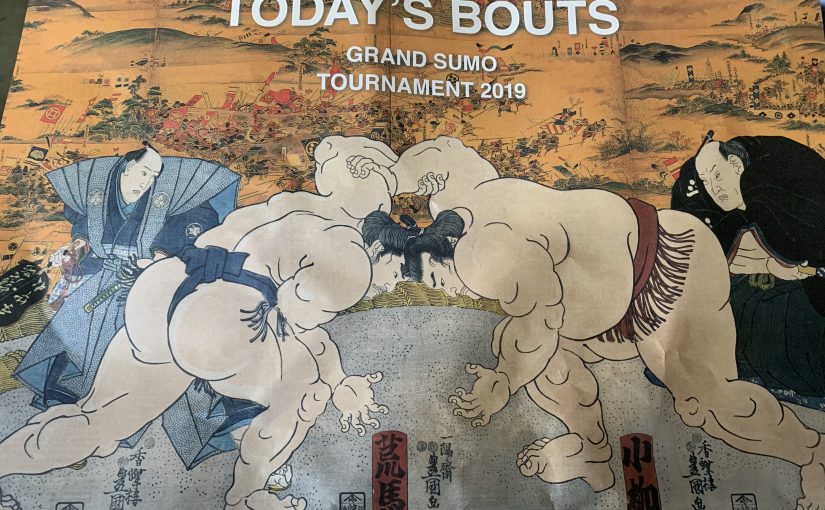It was most definitely serendipity times two; firstly to discover that one of the six annual sumo tournaments in Japan is held in Nagoya, and secondly to find that it would take place during my stay. I felt that there must be a ticket with my name on it – but just to make sure, I booked one through an English language website. It arrived by registered post –

– and I just had to hope I hadn’t been sent a ticket for the Under 14 badminton quarter finals by mistake. The only information I could glean from the ticket was that I wouldn’t be able to smoke.
Next quandary … how to find the stadium? I knew it was near the castle, so I set off purposefully in that direction, and before long, all I had to do was to follow a trail of sumo leading to the stadium –

– and a trail of sumo is much easier to follow than a trail of breadcrumbs –

It’s only when you see them with an average sized person that you realise how big they are –

Most of the seating in the basketball stadium had been replaced by mats for the sumo tournament, and you could buy a solo mat, a twin matted area, or a family space with four mats –

– and the posh ones here even have a little table so you can eat your lunch in a civilised manner.
I didn’t think my Western legs would be up to sitting cross-legged on the floor for about 8 hours, so I opted for one of the proper seats at the back, along with all the other foreigners, as it turned out.
The whole place was practically empty when I got there at ten o’clock, even though the tournament had started at 8.30; the diehard fans like to turn up in the early afternoon, just before the second division fights start. The morning fights are the junior wrestlers, hoping to move up the ranks if they put on a good showing that day.
I was surprised by how small the ring is – only four and a half metres in diameter – not very big at all for two hulking men to be grappling around in –

– and there is a shrine-like roof suspended over the ring because it is a sacred space; only the wrestlers, referees and sponsors are permitted to enter.
Each bout begins with a lot of posturing, stamping, thigh slapping, throwing salt around to purify the ring … anything to try to discountenance your opponent. Then when they’re finally ready, they lean forwards with their knuckles on the ground –

– and then suddenly lunge towards each other, both trying to grab hold of their opponent’s loin cloth to give him a massive wedgy and chuck him out of the ring.
Before each new division begins to fight, the wrestlers all parade around the ring wearing special aprons –

– a bit like the male equivalent of sexy waitresses in a strip club.
The Japanese love of queueing was in evidence at lunchtime, when a queue stretched the length of the stadium –

for the chance to eat a bowl of ‘sumo stew’. Some people were prepared to wait for an hour in a queue in the corridor and miss the wrestling, just to eat a bowl of rather sloppy looking stew. This young chap was rather unnerved to see me closing in on him and his lunch –

– perhaps he thought I wanted to avoid the queue and steal his stew.
And they’ve all got chopsticks – how can you eat something as liquid as that with a pair of chopsticks?
The place filled up in the afternoon, and the sponsors started parading their banners before some of the fights. The winning sumo in those bouts is handed an envelope full of cash as he leaves the ring – perfectly safe, I suppose – who’s going to mug a sumo wrestler?
Everything was done with perfect decorum. The winners didn’t cheer, punch the air or even smile, and the losers accepted their lot with equal equanimity; there were no tantrums, nobody was ‘gutted’, and no spectators questioned the referees’ eyesight. I think sumo definitely qualifies as a gentleman’s game – in fact, it may well be the only one left.
